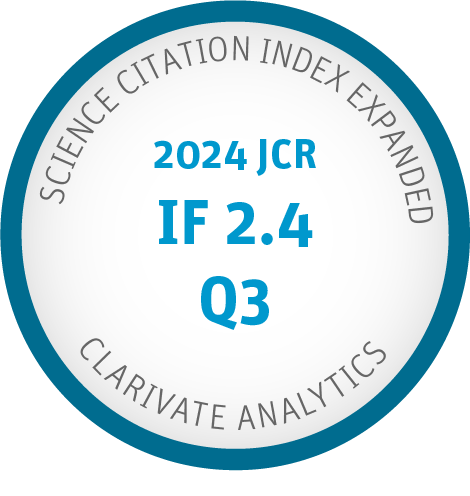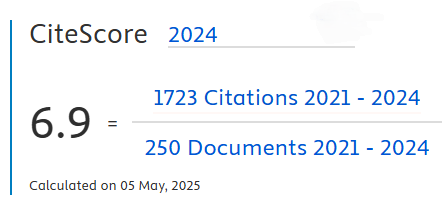PRESTO: A Recommender of Musical Collaborations Based on Heterogeneous Graph Neural Networks
DOI:
https://doi.org/10.9781/ijimai.2025.03.004Keywords:
Artificial Intelligence Tools, Graph Neural Network, Heterogeneous Graph, Musical Collaborations, Recommender SystemAbstract
The music industry is now more complex and competitive than ever before. In recent years, the search for collaborations with other artists has become a common strategy for musicians to maintain their presence in the sector. Besides, existing music streaming services such as Spotify have exposed large data feeds that can be used to develop innovative services within the realm of music. In this context, the present work introduces PRESTO, a novel recommendation system to suggest musicians for new collaborations with other artists by means of an ensemble of Graph Neural Networks. The system is fed with a heterogeneous graph representing the time evolution and the stationary aspects of a musician’s career. Finally, the proposal has been evaluated with a dataset comprising more than 200,000 artists, with an average F1 score above 0.75.
Downloads
References
P. Williamson, J. Luebbers, “Expanding models of music composition: Exploring the value of collaboration,” International Journal of Music Education, vol. 41, no. 1, pp. 111–128, 2023, doi: 10.1177/02557614221090520.
International Federation of the Phonographic Industry (IFPI), “Global music report 2023: State of the industry,” 2023. [Online]. Available: https://www.ifpi.org/wp-content/uploads/2020/03/Global_Music_Report_2023_State_of_the_Industry.pdf, Accessed: Jun 29th, 2025.
J. Parc, Y. Kim, “Analyzing the reasons for the global popularity of BTS: A new approach from a business perspective,” Journal of International Business and Economy, vol. 21, pp. 15–36, Nov. 2020, doi: 10.51240/jibe.2020.1.2.
R. D. Smith, “The network of collaboration among rappers and its community structure,” Journal of Statistical Mechanics: Theory and Experiment, p. P02006, feb 2006, doi: 10.1088/1742-5468/2006/02/P02006.
Spotify, “The crossover effect: Artist collaborations thrive on Spotify,” 2023. [Online]. Available: https://newsroom.spotify.com/2023-05-24/crossover-collaborations-genre-collabs-streaming-data-spotify/, Accessed: May 15th, 2024.
C. McDuffie, “Comprender las estadísticas de los fans: contribuciones de los ejecutivos de luminate,” 2022. [Online]. Available: https://artists.spotify.com/es-419/blog/ understanding-fan-analytics-luminate-execs-weigh-in, Accessed: May 15th, 2024.
M. O. Silva, G. P. Oliveira, D. B. Seufitelli, M. M. Moro, “Temporal success analyses in music collaboration networks: Brazilian and global scenarios,” Revista Vórtex, vol. 11, pp. 1–27, Aug. 2023, doi: 10.33871/23179937.2023.11.2.7185.
J. McKenzie, P. Crosby, L. J. Lenten, “It takes two, baby! feature artist collaborations and streaming demand for music,” Journal of Cultural Economics, vol. 45, pp. 385– 408, 2021.
Q. Dai, X.-M. Wu, L. Fan, Q. Li, H. Liu, X. Zhang, D. Wang, G. Lin, K. Yang, “Personalized knowledge- aware recommendation with collaborative and attentive graph convolutional networks,” Pattern Recognition, vol. 128, p. 108628, 2022, doi: https://doi.org/10.1016/j.patcog.2022.108628.
D. Holtz, B. Carterette, P. Chandar, Z. Nazari, H. Cramer, S. Aral, “The Engagement-Diversity Connection: Evidence from a Field Experiment on Spotify,” in Proceedings of the 21st ACM Conference on Economics and Computation, EC ’20, Virtual Event, Hungary, 2020, pp. 75–76.
I. Anderson, S. Gil, C. Gibson, S. Wolf, W. Shapiro, O. Semerci, D. M. Greenberg, ““Just the Way You Are”: Linking Music Listening on Spotify and Personality,” Social Psychological and Personality Science, vol. 12, no. 4, pp. 561–572, 2021, doi: 10.1177/1948550620923228.
M. O. Silva, L. M. Rocha, M. M. Moro, “Collaboration profiles and their impact on musical success,” in Proceedings of the 34th ACM/SIGAPP Symposium on Applied Computing, SAC ’19, New York, NY, USA, 2019, pp. 2070–2077, Association for Computing Machinery.
F. Calefato, G. Iaffaldano, L. Trisolini, F. Lanubile, “An in-depth analysis of occasional and recurring collaborations in online music co-creation,” Trans. Soc. Comput., vol. 4, Jan 2022, doi: 10.1145/3493800.
A. H. Raza, K. Nanath, “Predicting a hit song with machine learning: Is there an apriori secret formula?,” in 2020 International Conference on Data Science, Artificial Intelligence, and Business Analytics (DATABIA), 2020, pp. 111–116, IEEE.
D. Paul, S. Kundu, “A survey of music recommendation systems with a proposed music recommendation system,” in Emerging Technology inModelling and Graphics: Proceedings of IEM Graph 2018, Kolkata, India, 2020, pp. 279–285, Springer.
G. Björklund, M. Bohlin, E. Olander, J. Jansson, C. E. Walter, M. Au-Yong-Oliveira, “An exploratory study on the Spotify recommender system,” in Information Systems and Technologies: WorldCIST 2022, Volume 2, Budva, Montenegro: Springer, 2022, pp. 366–378.
A. Werner, “Organizing music, organizing gender: algorithmic culture and spotify recommendations,” Popular Communication, vol. 18, no. 1, pp. 78–90, 2020.
M. Schedl, “Deep learning in music recommendation systems,” Frontiers in Applied Mathematics and Statistics, vol. 5:44, 2019.
V. La Gatta, V. Moscato, M. Pennone, M. Postiglione, G. Sperlí, “Music recommendation via hypergraph embedding,” IEEE Transactions on Neural Networks and Learning Systems, vol. 34, no. 10, pp. 7887–7899, 2023, doi: 10.1109/TNNLS.2022.3146968.
H. Weng, J. Chen, D. Wang, X. Zhang, D. Yu, “Graph-based attentive sequential model with metadata for music recommendation,” IEEE Access, vol. 10, pp. 108226–108240, 2022, doi: 10.1109/ACCESS.2022.3213812.
H.-G. Kim, G. Y. Kim, J. Y. Kim, “Music recommendation system using human activity recognition from accelerometer data,” vol. 65, p. 349–358, Aug 2019, doi: 10.1109/TCE.2019.2924177.
F. Fessahaye, L. Perez, T. Zhan, R. Zhang, C. Fossier, R. Markarian, C. Chiu, J. Zhan, L. Gewali, P. Oh, “T- recsys: A novel music recommendation system using deep learning,” in 2019 IEEE international conference on consumer electronics (ICCE), 2019, pp. 1–6, IEEE.
J. P. Singh, J. K. Bhatia, “Scientific exploration of music recommendation system using facial expressions,” in Advances in Data and Information Sciences: Proceedings of ICDIS 2022, Leipzig, Germany, 2022, pp. 11–21, Springer.
X. Wen, “Using deep learning approach and iot architecture to build the intelligent music recommendation system,” Soft Computing, vol. 25, pp. 3087–3096, 2021.
T. Li, M. Choi, K. Fu, L. Lin, “Music sequence prediction with mixture hidden markov models,” in 2019 IEEE International Conference on Big Data (Big Data), 2019, pp. 6128–6132, IEEE.
F. Pachet, “Hit song science,” in Music data mining, T. Li and M. Ogihara and G. Tzanetakis Eds., 2011, pp. 305–326, Chapman & Hall/CRC Press Boca Raton, FL, USA.
R. Rajyashree, A. Anand, Y. Soni, H. Mahajan, “Predicting Hit Music using MIDI features and Machine Learning,” in 2018 3rd International Conference on Communication and Electronics Systems (ICCES), 2018, pp. 94–98.
A. H. Raza, K. Nanath, “Predicting a Hit Song with Machine Learning: Is there an apriori secret formula?,” in 2020 International Conference on Data Science, Artificial Intelligence, and Business Analytics (DATABIA), 2020, pp. 111–116.
E. Zangerle, M. Vötter, R. Huber, Y.-H. Yang, “Hit song prediction: Leveraging low-and high-level audio features.,” in Proceedings of the International Society for Music Information Retrieval Conference (ISMIR), Delf, Netherlands, 2019, pp. 319–326.
M. Mayerl, M. Vötter, G. Specht, E. Zangerle, “Pairwise learning to rank for hit song prediction,” in Proceedings of BTW 2023, Dresden, Germany, 2023, pp. 555–565.
M. Schedl, S. Brandl, O. Lesota, E. Parada-Cabaleiro, D. Penz, N. Rekabsaz, “Lfm-2b: A dataset of enriched music listening events for recommender systems research and fairness analysis,” in ACM SIGIR Conference on Human Information Interaction and Retrieval, CHIIR ’22, New York, NY, USA, 2022, p. 337–341, Association for Computing Machinery.
M. d. O. Santos-Silva, Collaboration-aware hit song analysis and prediction. PhD dissertation, Universidade Federal de Minas Gerais, 2020.
C. E. Shannon, “A mathematical theory of communication,” The Bell system technical journal, vol. 27, no. 3, pp. 379–423, 1948.
Y.-W. Cheung, K. S. Lai, “Lag order and critical values of the augmented dickey–fuller test,” Journal of Business & Economic Statistics, vol. 13, no. 3, pp. 277–280, 1995.
Z. Yuan, X. Zhou, T. Yang, “Hetero-convlstm: A deep learning approach to traffic accident prediction on heterogeneous spatio-temporal data,” in Proceedings of the 24th ACM SIGKDD International Conference on Knowledge Discovery & Data Mining, KDD ’18, New York, NY, USA, 2018, pp. 984–992, Association for Computing Machinery.
W. Hamilton, Z. Ying, J. Leskovec, “Inductive representation learning on large graphs,” Advances in neural information processing systems, vol. 30, 2017.
P. Velickovic, G. Cucurull, A. Casanova, A. Romero, P. Lio, Y. Bengio, et al., “Graph attention networks,” stat, vol. 1050, no. 20, pp. 10–48550, 2017.
M. Fey, J. E. Lenssen, “Fast graph representation learning with PyTorch Geometric,” in ICLR Workshop on Representation Learning on Graphs and Manifolds, 2019.
B. Rozemberczki, P. Scherer, Y. He, G. Panagopoulos, A. Riedel, M. Astefanoaei, O. Kiss, F. Beres, G. Lopez, N. Collignon, R. Sarkar, “PyTorch Geometric Temporal: Spatiotemporal Signal Processing with Neural Machine Learning Models,” in Proceedings of the 30th ACM International Conference on Information and Knowledge Management, 2021, p. 4564–4573.
Downloads
Published
-
Abstract179
-
PDF37








